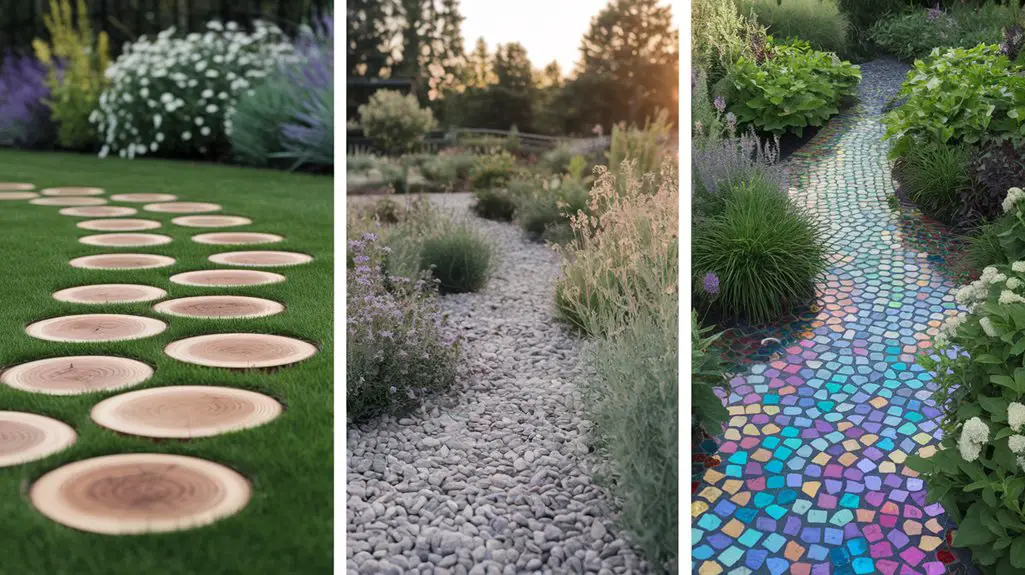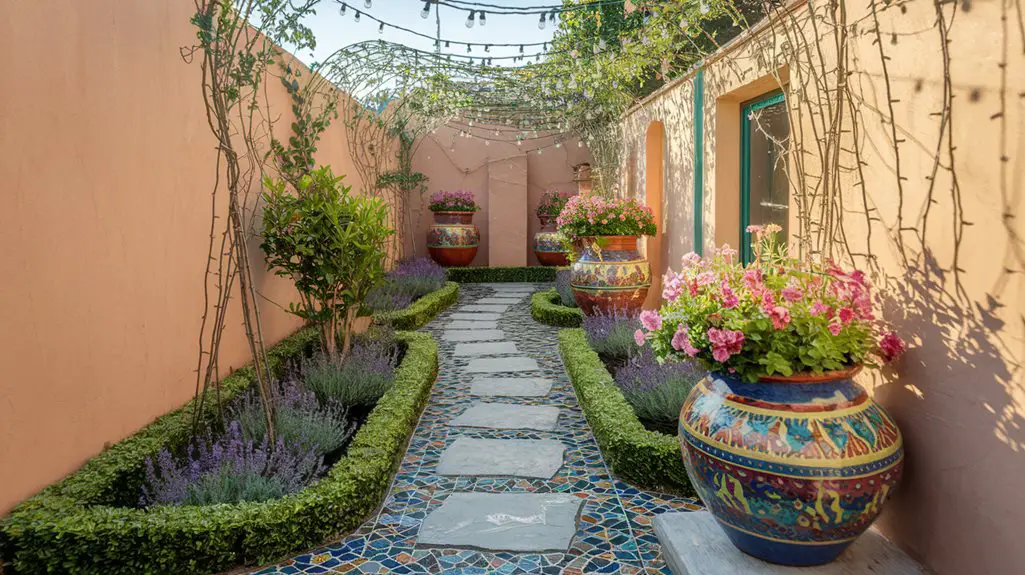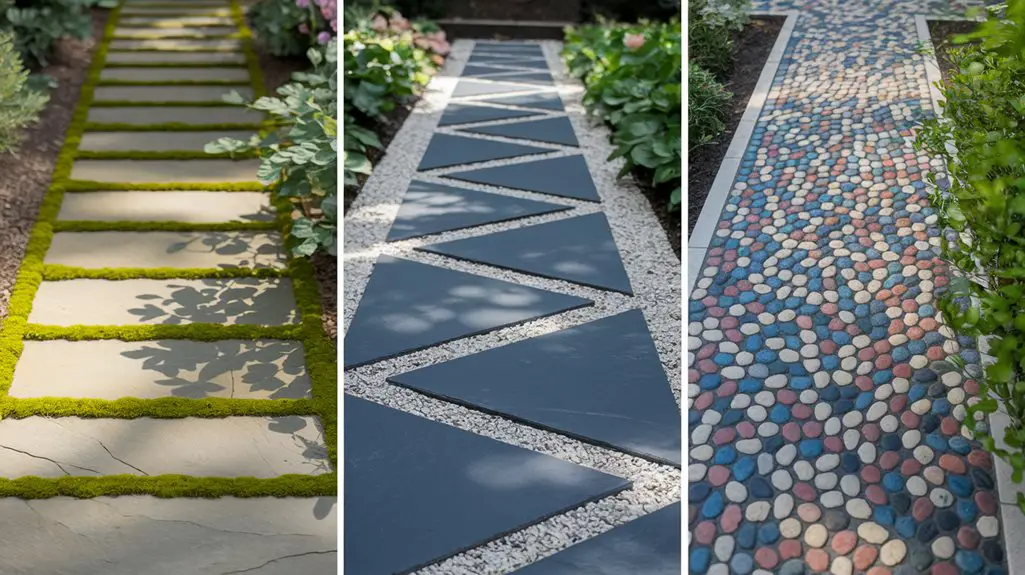Like a river carving its own sustainable path through a landscape, your garden walkways can work with nature rather than against it. You’re making dozens of environmental decisions in your yard without realizing it—and pathway choices dramatically impact water management, waste reduction, and habitat creation. Your steps through the garden shouldn’t leave a heavy ecological footprint. Discover how permeable pavers, recycled materials, and native ground covers offer smarter ways to walk lightly on the earth.
Permeable Paver Pathways: Beauty Meets Sustainability
While traditional concrete walkways direct rainwater into storm drains and away from your garden, permeable paver pathways offer a more elegant solution that works with nature’s design.
These specialized pavers allow water to filter through gaps and into the soil below, replenishing groundwater and reducing runoff by up to 90%.
You’ll find various materials available—recycled concrete, natural stone, or clay brick—each providing distinct aesthetic appeal while maintaining functionality.
The spaces between pavers can host drought-resistant ground covers like creeping thyme or Irish moss, enhancing biodiversity.
Installation requires creating a proper foundation with layers of different-sized gravel to guarantee ideal drainage.
Though initially more expensive than concrete, permeable pavers ultimately save you money through reduced irrigation needs and stormwater management fees. Additionally, using eco-friendly materials in your pathway construction can further promote a sustainable garden environment.
Recycled Material Walkways: From Waste to Wonderful

Permeable pavers represent just one approach to sustainable pathways—your garden can also showcase creative repurposing through recycled material walkways.
By diverting materials from landfills, you’re reducing waste while creating unique garden features that tell an environmental story.
Consider these recycled options for your next pathway project:
- Crushed glass mulch – Transforms discarded bottles into sparkling pathway surfaces that provide excellent drainage and deter pests.
- Reclaimed brick or stone – Offers authentic weathered character while embodying the embodied energy savings of reuse over new production.
- Composite lumber walkways – Made from plastic-wood blends, these provide long-lasting, splinter-free paths requiring minimal maintenance.
These solutions create closed-loop systems where yesterday’s waste becomes today’s functional landscape element—an approach that mimics natural ecosystems where nothing is truly discarded. Additionally, using sustainable materials enhances the overall environmental impact of your gardening efforts.
Native Ground Cover Trails: Living Pathways That Thrive

Beyond hardscaping solutions, native ground cover trails offer perhaps the most harmonious pathway option for eco-conscious gardeners. These living carpets create permeable surfaces where rainwater naturally infiltrates soil rather than running off.
Select plants adapted to your region’s climate conditions—they’ll require minimal irrigation once established. Low-growing thyme, creeping sedum, and native mosses thrive in various light conditions while withstanding moderate foot traffic. For shadier paths, consider wild ginger or sweet woodruff.
The ecological benefits extend beyond water conservation. These plant communities support vital pollinator habitats while suppressing weeds naturally. Their extensive root systems prevent erosion and sequester carbon more effectively than bare soil or mulch. Additionally, incorporating pest-resistant plants can enhance the garden’s resilience against common garden pests.
Maintenance typically involves occasional trimming and selective weeding—far less resource-intensive than conventional path materials that degrade over time.
Conclusion
You’re not just building a garden path—you’re making an ecological choice. Whether you select permeable pavers, recycled materials, or native ground covers, you’ll join the environmental solution. Studies show that permeable pathways can reduce stormwater runoff by up to 90%, protecting local waterways from pollution while replenishing groundwater supplies. Your sustainable path choice creates ripple effects throughout your local ecosystem far beyond your garden’s boundaries.



